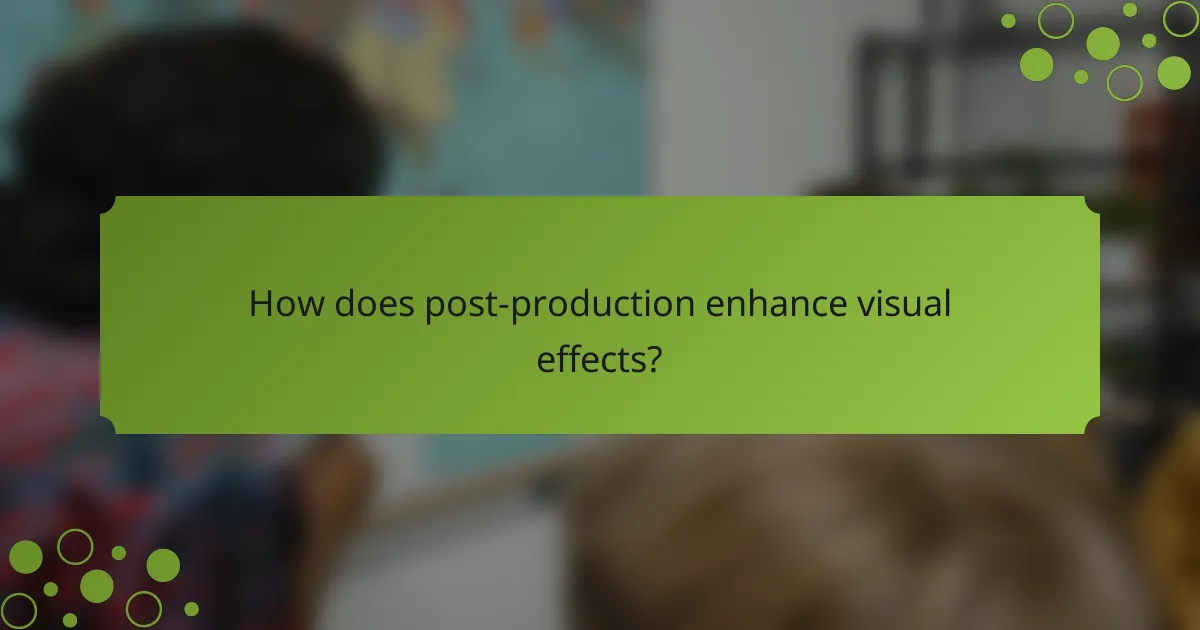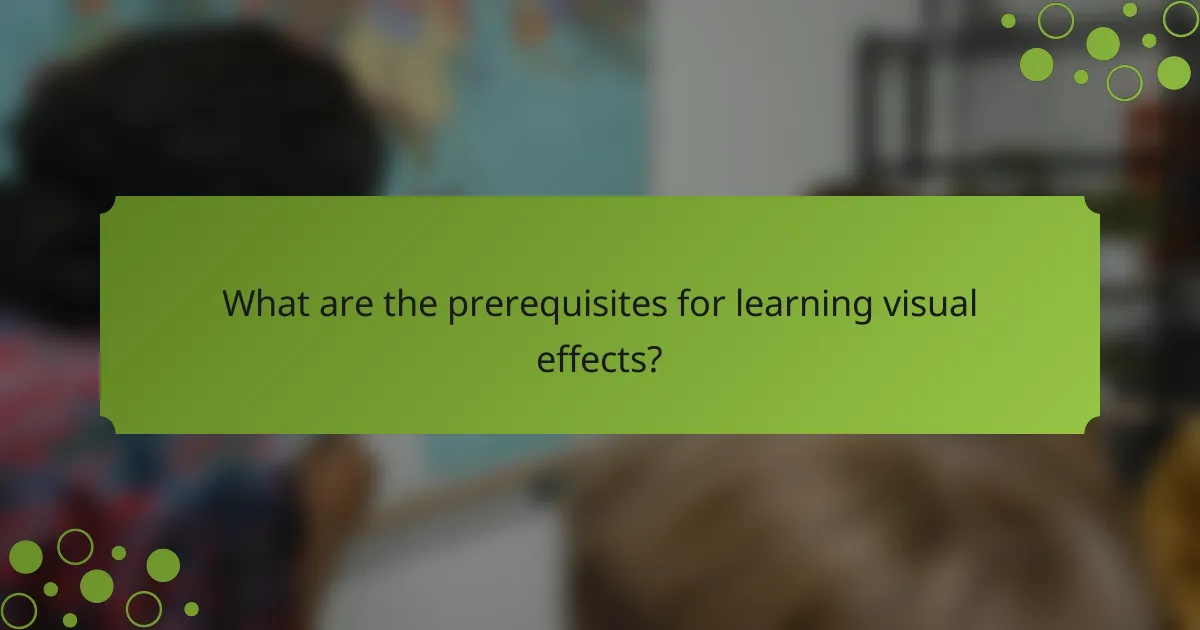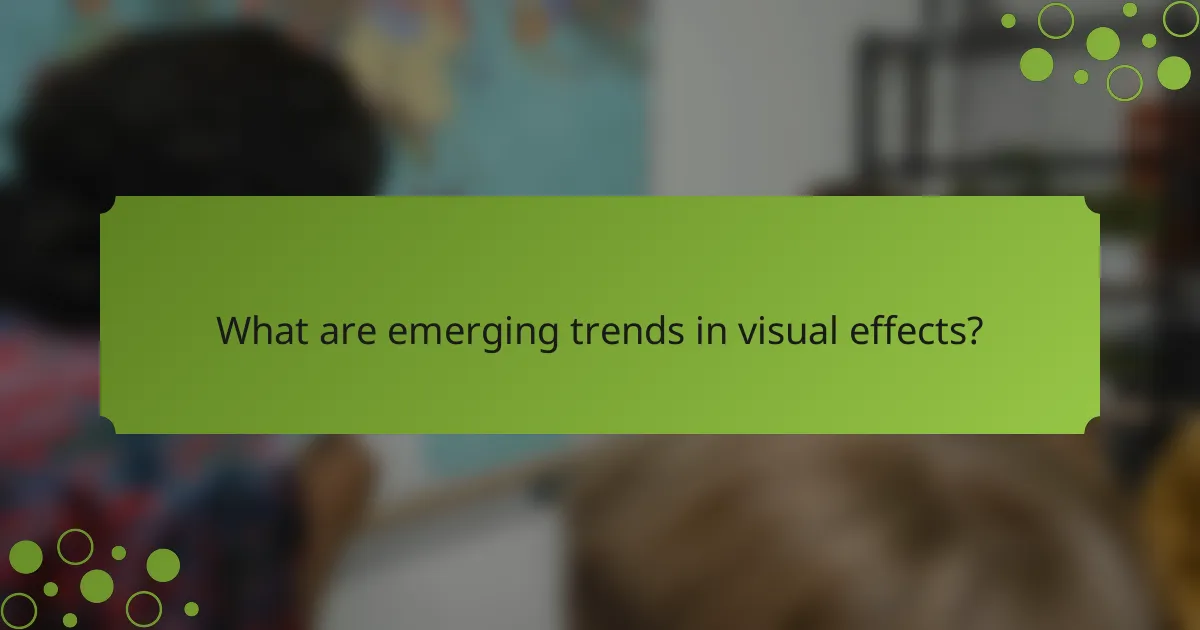Visual effects in filmmaking encompass a blend of CGI integration, practical effects, and post-production techniques to create stunning visuals. By combining computer-generated imagery with live-action footage, filmmakers can achieve a seamless visual experience that enhances storytelling. Practical effects, such as animatronics and makeup, add authenticity, while post-production processes refine these elements to ensure a polished final product.

How to integrate CGI in visual effects?
Integrating CGI in visual effects involves combining computer-generated imagery with live-action footage to create a cohesive visual experience. This process requires careful planning, the right software tools, and techniques to ensure that the CGI elements blend seamlessly with real-world environments.
Software options like Autodesk Maya
Autodesk Maya is a leading software choice for CGI integration due to its powerful modeling, animation, and rendering capabilities. Other popular options include Blender, Cinema 4D, and 3ds Max, each offering unique features that cater to different aspects of visual effects production.
When selecting software, consider factors such as your team’s skill level, project requirements, and budget. Many of these programs offer trial versions, allowing you to evaluate their suitability before committing to a purchase.
Techniques for seamless blending
To achieve seamless blending of CGI and live-action footage, focus on matching lighting, shadows, and camera movements. Use techniques like motion tracking to ensure that CGI elements move in sync with the live-action footage.
Color grading is also essential; applying similar color tones and contrasts to both CGI and live-action elements helps create a unified look. Regularly review your work on different screens to ensure consistency across various viewing platforms.
Case studies from Australian films
Australian films such as “The Matrix” and “Mad Max: Fury Road” showcase effective CGI integration. In “The Matrix,” groundbreaking CGI techniques were used to create iconic scenes, blending practical effects with digital enhancements.
In “Mad Max: Fury Road,” a combination of practical effects and CGI allowed for stunning visuals while maintaining a sense of realism. These films highlight the importance of collaboration between CGI artists and practical effects teams to achieve a cohesive final product.

What are the best practical effects techniques?
The best practical effects techniques involve using physical methods to create visual effects on set, enhancing realism and immersion. Techniques such as animatronics, physical props, and makeup effects are essential for filmmakers aiming to achieve a tangible, authentic look in their productions.
Use of animatronics in film
Animatronics are mechanical devices that simulate living creatures, providing filmmakers with a way to create lifelike movements and expressions. These techniques are particularly effective in genres like science fiction and fantasy, where creatures need to appear realistic without relying solely on CGI.
When using animatronics, it’s crucial to balance the complexity of the mechanism with the desired effect. While advanced animatronics can be expensive, simpler designs can still yield impressive results. Filmmakers should consider the scale of the project and the specific needs of each scene to determine the best approach.
Physical props vs. digital effects
Physical props offer tangible elements that actors can interact with, enhancing the authenticity of a scene. In contrast, digital effects provide flexibility and can create visuals that are difficult or impossible to achieve practically. The choice between physical props and digital effects often depends on budget, time constraints, and the desired visual style.
For many filmmakers, a hybrid approach that combines both methods can yield the best results. Using physical props for close-up shots can enhance realism, while digital effects can fill in the gaps for wider shots or complex sequences. This balance helps maintain immersion while leveraging the strengths of each technique.
Examples from Mad Max: Fury Road
In “Mad Max: Fury Road,” practical effects played a critical role in creating the film’s intense and gritty aesthetic. The production utilized extensive real-world stunts, vehicles, and animatronics to bring the post-apocalyptic world to life, minimizing reliance on CGI.
For instance, the film featured real vehicles modified for stunts, with many scenes shot in the Australian desert. The use of practical effects not only enhanced the film’s visual impact but also contributed to the actors’ performances, as they interacted with real elements rather than digital substitutes.

How does post-production enhance visual effects?
Post-production significantly enhances visual effects by refining and integrating CGI with practical effects, ensuring a cohesive final product. This stage involves various processes, including color grading, editing, and sound design, all of which contribute to the overall visual impact of a film or video.
Color grading with DaVinci Resolve
Color grading in DaVinci Resolve allows filmmakers to adjust the color balance, contrast, and saturation of their footage, enhancing the visual storytelling. This software provides powerful tools for creating specific moods and ensuring consistency across scenes, which is crucial when integrating CGI with live-action elements.
When using DaVinci Resolve, consider starting with a color correction pass to fix any exposure issues before moving on to creative grading. A common technique is to use LUTs (Look-Up Tables) to achieve a desired look quickly, but always adjust them to fit the unique characteristics of your footage.
Editing workflows in Adobe Premiere Pro
Adobe Premiere Pro offers a flexible editing workflow that is essential for managing complex visual effects projects. Its timeline-based interface allows for easy layering of video tracks, making it simple to integrate CGI elements with practical effects seamlessly.
To optimize your editing process, utilize features like nested sequences for organizing visual effects shots and apply adjustment layers for consistent effects across multiple clips. Regularly render previews to check the integration of CGI and live-action, ensuring they blend naturally.
Impact of sound design on visuals
Sound design plays a crucial role in enhancing visual effects by creating an immersive experience that complements the visuals. Well-crafted soundscapes can elevate CGI, making it feel more realistic and engaging for the audience.
When designing sound for visual effects, focus on synchronizing audio cues with visual actions to create a cohesive experience. For instance, adding ambient sounds or foley effects can significantly enhance the believability of CGI elements, making them feel part of the real world. Avoid overwhelming the visuals with excessive sound; instead, aim for a balanced mix that supports the narrative.

What are the prerequisites for learning visual effects?
To learn visual effects, you should have a solid foundation in both artistic and technical skills. Familiarity with software tools and an understanding of cinematography principles are essential for creating compelling visual content.
Essential software knowledge
Proficiency in key software is critical for anyone interested in visual effects. Industry-standard programs include Adobe After Effects, Autodesk Maya, and Nuke. Each of these tools serves different purposes, from compositing to 3D modeling.
Start by mastering one software package before branching out. Focus on learning the interface, basic functions, and common workflows. Online tutorials and courses can provide structured learning paths and practical exercises.
Additionally, consider exploring plugins and add-ons that enhance functionality. For example, Red Giant offers tools for color correction and effects, which can significantly improve your projects.
Understanding basic cinematography
A strong grasp of cinematography is vital for effective visual effects work. This includes knowledge of camera angles, lighting, and shot composition. Understanding these elements helps you create effects that seamlessly integrate with live-action footage.
Study the fundamentals of framing and movement, as they influence how visual effects are perceived. For instance, knowing how to match the depth of field and motion blur in your effects to the original footage ensures a more realistic final product.
Practice by analyzing films and identifying how visual effects complement the cinematography. This can provide insights into how to approach your own projects, making your effects more believable and engaging.

How to choose the right online course for visual effects?
Choosing the right online course for visual effects involves assessing your learning goals, the course content, and the platform’s reputation. Look for courses that offer a blend of practical and theoretical knowledge, as well as access to industry-standard tools and techniques.
Comparing platforms like Coursera and Udemy
Coursera and Udemy are popular platforms for visual effects courses, but they cater to different audiences. Coursera often partners with universities and offers more structured programs, which may include certifications or degrees, while Udemy provides a wider variety of courses, often at lower prices, but with less formal recognition.
When comparing these platforms, consider factors like course length, user reviews, and instructor credentials. For instance, Coursera courses may range from a few weeks to several months, while Udemy courses can often be completed at your own pace, typically within a few hours to a couple of weeks.
Criteria for selecting a course
When selecting a visual effects course, prioritize the course syllabus, focusing on the specific skills you want to learn, such as CGI integration or practical effects. Check if the course includes hands-on projects or assignments that allow you to apply what you’ve learned.
Additionally, consider the instructor’s experience and the course’s overall rating. A course with high ratings and positive feedback from past students is likely to provide a better learning experience. Look for courses that offer a money-back guarantee, as this can provide peace of mind if the course does not meet your expectations.

What are emerging trends in visual effects?
Emerging trends in visual effects (VFX) focus on the integration of advanced technologies such as artificial intelligence, real-time rendering, and virtual production techniques. These innovations enhance the creative process and improve efficiency in producing high-quality visual content.
AI in Visual Effects
Artificial intelligence is transforming visual effects by automating tasks like rotoscoping and image enhancement. This technology can analyze footage and generate effects more quickly than traditional methods, allowing artists to focus on creative aspects rather than repetitive tasks.
For example, AI algorithms can assist in generating realistic textures or simulating natural phenomena, significantly reducing production time. However, it’s essential to balance AI usage with human creativity to maintain artistic integrity.
Real-Time Rendering
Real-time rendering is becoming increasingly popular in visual effects, especially in gaming and virtual production. This technique allows creators to visualize scenes instantly, enabling immediate feedback and adjustments during the filmmaking process.
Using engines like Unreal Engine or Unity, filmmakers can create immersive environments that respond dynamically to changes. This trend not only speeds up production but also enhances collaboration among teams, as everyone can see updates in real-time.
Virtual Production Techniques
Virtual production combines live-action footage with digital environments, allowing filmmakers to create complex scenes without extensive post-production work. This method often uses LED walls to project backgrounds, enabling actors to interact with their surroundings more naturally.
By integrating practical effects with CGI, filmmakers can achieve a more cohesive look. This approach is becoming standard in major productions, as it reduces the need for extensive green screen setups and enhances the overall visual quality.
